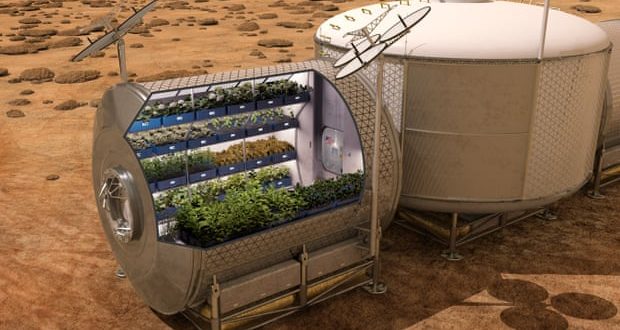Nasa’s Veggie system will enable astronauts to safely grow nutritious fresh food
Experiencing weightlessness, gazing back at the Earth as a pale blue dot and the adrenaline rush of being propelled into orbit at 20,000mph: life as an astronaut has various unique attractions.
The food is not among them, with space travellers over the years enduring delicacies such as freeze-dried ice-cream, liquid salt and pepper, and dehydrated prawn cocktail. However, the menu is now set to be expanded, with the first space-grown lettuce having been found to be as safe, nutritious and palatable as the Earth-grown variety.
Gioia Massa of Nasa Kennedy Space Center, the lead scientist on the lettuce-growing project, said that growing food in space could be crucial for astronauts on long-duration missions such as Artemis III, scheduled to land humans on the lunar south pole by 2024, and Nasa’s first crewed mission to Mars, planned for the late 2020s.
“If you store packaged food for a long duration the quality, flavour and nutritional quality decrease, the vitamins degrade,” she said. “We can’t guarantee that they’re going to get enough nutrition right now.”
She added: “There may also be psychological benefits of growing plants and looking after plants.”
Space food is said to have improved in recent years – anything sent to the International Space Station (ISS) has to score a six or above on a one-to-nine taste scale where one is “the worst thing you’ve ever tasted”. But even so, astronauts can grow fatigued of eating the same old vacuum-packed meals.
“There’s some weight loss in many of the astronauts,” said Massa.
Lettuce was grown in batches onboard the ISS between 2014-16. The vegetable production system – known as Veggie – comprised of plant pillows (sealed units containing ceramic soil), LED lighting and a watering system that involved astronauts injecting water through a tube.
The lettuce crops grew undisturbed for 33 to 56 days before being harvested and eaten, or deep-frozen and returned to Earth for chemical and biological analysis. Astronauts rubbed the leaves with sanitised wipes before eating. “We don’t want to get anyone sick. That’s why we’re doing all this,” said Massa.
The space-grown lettuce was similar in composition to Earth-grown controls, and some plants were even richer in elements such as potassium, sodium, phosphorus, sulphur and zinc. They had higher levels of bacteria, possibly due to their growing in a warmer, more humid and closed-air system, but were not found to carry any dangerous bacteria such as coliform E coli or salmonella. The findings of the project are published in the journal Frontiers in Plant Science.
Nasa is now expanding the range of produce grown onboard the ISS, with plans for pak choi, dragoon lettuce, wasabi mustard and red Russian kale to be grown later this year, as well as tomatoes and peppers. It will be longer before these can be transformed into a stir fry, however. “We have nowhere to cook up there so we’re looking at things that taste good fresh,” said Massa.
The Guardian
 Lebanese Ministry of Information
Lebanese Ministry of Information



